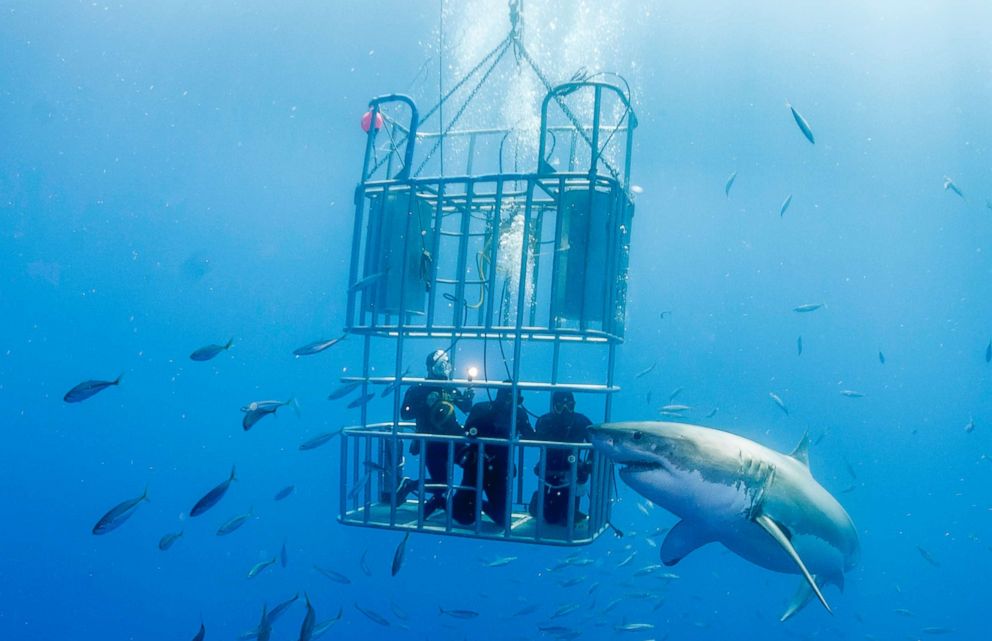Meet 'Deep Blue': Possibly the largest great white shark ever filmed
Stunning footage of what may be the world's largest great white shark caught on camera has resurfaced.
The shark, nicknamed "Deep Blue" by expert Mauricio Hoyos Padilla, could be one of the biggest great whites ever filmed, according to Discovery, the network that airs "Shark Week."
As fans tune in for "Shark Week," interest in Padilla's videos of "Deep Blue" that posted to Facebook has surged once more.

In one of the videos posted in 2015, Padilla reaches for its fin and "high fives" the shark as it moves past him. In a separate "Shark Week" video, experts affix a tag to the shark just before it swims away.
The videos were filmed off the coast of Mexico's Guadalupe Island and were previously aired as part of the channel's "Shark Week" lineup.
Padilla, who works for the program, said he believed the shark was a pregnant female around 20 feet in length and more than 50 years old.
But George Burgess, director emeritus of the International Shark Attack File maintained by the Florida Museum of Natural History, cast doubt on estimates that the shark was 20 feet in length.
"It's a very big white shark, obviously. One of the largest that has ever been seen in the water," Burgess told ABC News. "I'm not sure it's 20, I suspect it's a little less than that. Perhaps 18, 19 feet, if I were to guess. The only thing I take umbrage to is that she was pregnant, I'm not sure that she was from what I could see."
"She's a big girl," he added.

Sharks have been an enduring fascination for humans for decades, and none more so than the great white shark, immortalized in people's memories -- and nightmares -- by the 1975 Steven Spielberg film "Jaws."
However, experts say that instances of sharks attacking humans are extremely rare and that the negative stereotypes associated with the creatures are exaggerated.
Each year, there are anywhere between 70 to 100 shark attacks worldwide, resulting in about five to 15 deaths, according to the Florida Museum of Natural History at the University of Florida.
Burgess said he disapproved of Padilla high-fiving the shark and said humans should give the animals their space.
"White sharks, because of their large size and big mouths, are dangerous. Would you go grab the tail of a lion if you were out in the wild? I think not. So why would you feel the need to harass an 18-20 foot shark?" Burgess said. "We need to remember that if these weren't sharks, would we accept some of the things that were shown and done to them? We wouldn't because sharks have a certain cache to them that allows us to somehow think of them as evil and/or unworthy of the same degree of respect that we would give other animals. "
But although attacks on humans can be deadly, a shark is much more likely to avoid humans -- and experts say humans would do well to do the same.




